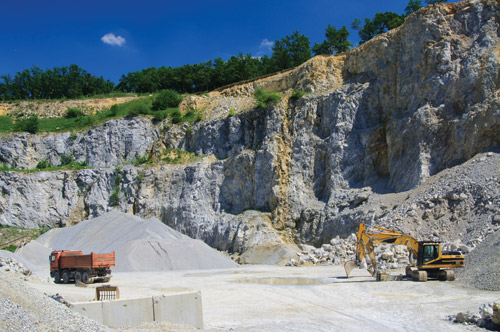Materials Matter
Wood, Concrete and Steel: The Raw Materials
In understanding the carbon footprint of the various materials, it is useful to know how they are made. Wood, concrete and steel are end products, processed from various natural resources.
Wood is harvested by one of several silvicultural systems, based on the ecology of the site. The harvesting of forests conducted according to the principles of sustainable forest management, including their use as a source of wood products and biofuels, allows the greatest potential for reducing net carbon emissions. According to the Canadian Council of Forest Ministers, sustainable forest management is management that maintains and enhances the long-term health of forest ecosystems for the benefit of all living things while providing environmental, economic, social and cultural opportunities for present and future generations.
The embodied energy in wood is relatively low compared to concrete and steel,6 which rely on substances that must be mined and heated by fossil fuels to extremely high temperatures. Concrete is a composite construction material that is highly durable, low maintenance, and can be easily adjusted to meet various strength requirements. It is versatile in that it can create structures of any size and shape, and energy efficient in that it can reduce heating costs in winter and has a high rate of solar reflectance that reduces reliance on air conditioning.
Typically, a concrete mix is about 10 to 15 percent cement, 60 to 75 percent aggregate and 15 to 20 percent water, though proportions often change with the required strength and flexibility. While most of concrete's ingredients are manufactured products themselves or mined materials, it's the cement in concrete that has the highest embodied energy. The major ingredient needed for cement is limestone, which is found in abundance worldwide. In most cases, limestone is blasted from surface mines and removed in large blocks to a crusher, mixed with other raw materials and transferred to a rotating furnace and heated to about 2,700 degrees F, powered by coal or natural gas, in order for the materials to coalesce. The mixture is cooled and ground to fine gray powder (cement), which is then transported to its destination by truck, rail or ship. Sometimes, fly ash, a byproduct of coal burning plants can be substituted for a percentage of the cement, as can volcanic ash or magnesium oxide that is mined or processed from seawater, with substantial reductions in carbon footprint.
Steel is an alloy consisting mainly of iron and has a carbon content between 0.2 percent and 2.1 percent by weight, depending on grade. A durable, architecturally versatile material, steel is energy efficient, quick to construct and has a high strength-to-weight ratio and long-term cost effectiveness.
The process of manufacturing steel, however, is energy intensive and consists of a number of procedures. Steel's main ingredient is iron ore, which must be extracted through open pit mining, and heated to extremely high temperatures via fossil fuels—two processes that take a toll on the environment. In surface mines, ground is removed from large areas to expose the ore. Ore is then crushed, sorted and removed by train or ship to the blast furnace where the iron is heated to 3,000 degrees F, usually with charcoal or coke, and charged with the ore and limestone. The molten iron then drains off and iron cubes are formed—this pig iron, as it's called, is the basis for steel.
For both concrete and steel, there are adverse environmental consequences from open pit mining, as well as from the significant fossil fuels expended and emissions generated in processing the raw materials; but both industries have made strides to lighten their environmental footprint.
 |
Some minerals are extracted via surface mining. Copyright iStockphoto.com/Mac99 |









